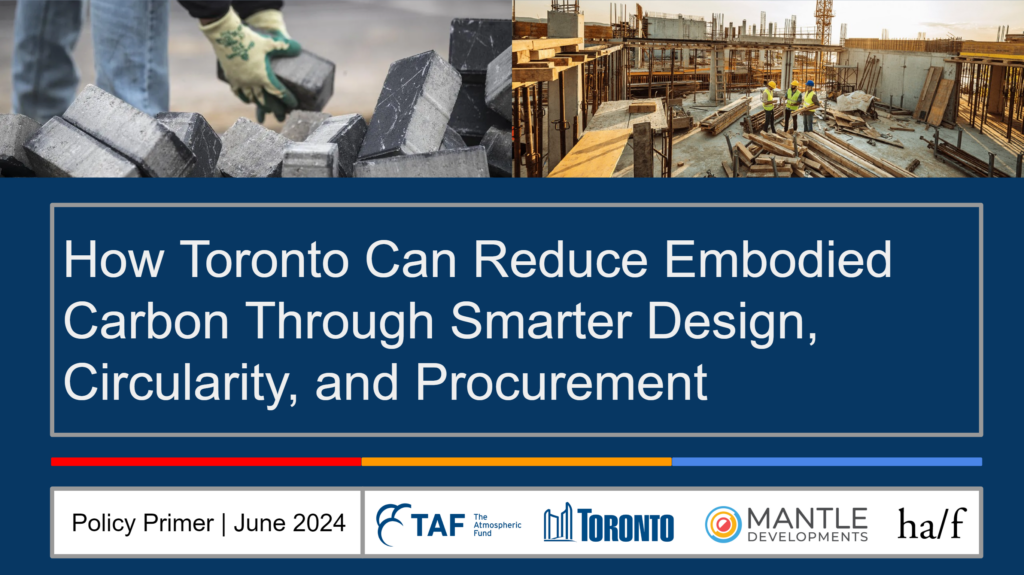Embodied carbon is being increasingly recognized for its central role in the carbon impact of the built environment. The City of Toronto is leading the way for other Ontario municipalities in developing a toolkit of guidelines in order to reduce the carbon impact of construction from a variety of angles. This toolkit is being developed jointly by Mantle Developments and Ha/f Climate Design, with funding provided by The Atmospheric Fund.
Ha/f Climate Design examined urban design strategies and undertook extensive whole building life cycle assessment (LCA) modelling to understand the embodied carbon impact of various design decisions. These results were then used to develop a series of design recommendations to minimize embodied carbon.
Mantle Developments led the investigation into more sustainable circularity and procurement policies. This included a scan of cutting edge policies from around the world, as well as a gap analysis of current policy in the City of Toronto. Mantle also engaged City staff in a number of working group meetings to better identify weaknesses in Toronto policy.
Mantle and Ha/f jointly produced this document as an initial summary of their policy recommendations. These results will be built on and turned into the toolkit for municipal governments which will be shared by the fall of 2024.

